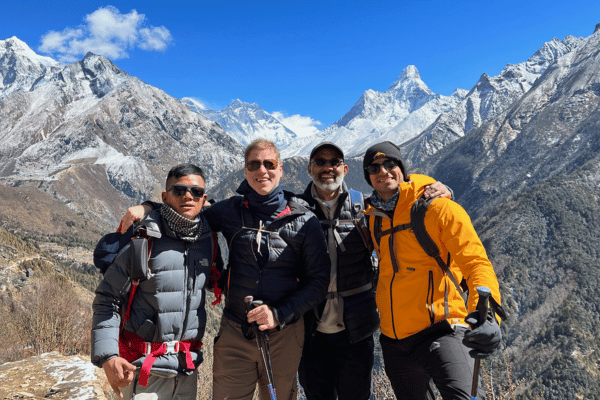
Nightmares on Everest: Battling Inner Demons at the World’s Edge
Above: Me, worn down and reflective, standing in Kathmandu after the Everest climb, representing the mental and emotional toll of facing inner demons on the journey.
I faced the darkness. Climbing Everest was never supposed to be an emotional breakdown—but it became just that. Each night, I was hit with vivid nightmares.
I saw my dad’s last moments when the ambulance noted his oxygen dropping. The next day, he passed away, and that memory of helplessness mirrored what I was feeling on the mountain. My Sherpa had noticed my own oxygen levels dropping, and in that freezing cold, gasping for air, it felt too close to the nightmare of losing my father. I woke up 12 times that night, each time choking on guilt and fear.
But it wasn’t just about my dad. The guilt was eating me alive from every direction—past relationships, breakups, moments where I questioned which woman I truly loved. Every failed relationship resurfaced, the mistakes haunting me in the thin mountain air.
What if I don’t make it? The question kept coming back. But even worse was the guilt: Who did I love the most?
Above: This video captures my reflections on the nightmares and emotional turmoil I faced while confronting my past.
The Emotional Weight of Everest
I lay there, freezing in that cold sleeping bag, and I saw my life flashing before me. I was haunted by visions of the people I had hurt, the guilt over failed relationships.
Breakups felt like they were crushing me all over again. I had to give myself mercy, to forgive myself for everything. I found myself apologizing to the person I had become.
My mind kept spiraling until I realized the only way to survive the climb, and my own thoughts, was to Let Go Boss. Let go of the guilt, let go of control, and focus on the present moment.
Every time I woke up gasping for air, I told myself, “You can’t carry this with you anymore.” That became the new battle—letting go of all the emotional weight I had been carrying for years.
Learning to Let Go Through Struggle
As I began to come to terms with my emotional baggage, the physical struggle of the climb started to feel different.
I no longer let my mind wander to past mistakes. Instead, I focused on what was directly in front of me: the boots of my Sherpa. Following him, step by step, became my way of letting go.
I couldn’t control the altitude or the nightmares, but I could control my next move. Let Go Boss was no longer just a saying—it was my only way through.
The Power of a Good Leader

Above: Basim, standing in Kathmandu after the climb, reflecting on the power of leadership and how it helped him push through the hardest moments.
There were moments when I felt lost, both literally and mentally. I wasn’t always walking with my brother, and people began to worry about how quiet I had become.
My energy was spent on survival. My brother had dust in his eyes at one point, and the whole group stopped to help. It was a reminder that leadership isn’t just about pushing forward—it’s about being there for each other when it matters.
The Sherpas kept a steady pace, always calm, even when things felt out of control. They showed me that leadership is about guiding others through the storm, not running ahead blindly.
Conclusion: Finding Strength in the Struggle
Everest became more than a physical climb—it was an emotional reckoning. The nightmares forced me to face my past, my mistakes, and my regrets.
But with each step, I learned to let go. Let Go Boss became the only way forward, not just on the mountain but in my life.
I didn’t need to hold on to everything, or carry the weight of past failures with me. I just had to keep moving, forgiving myself along the way.


